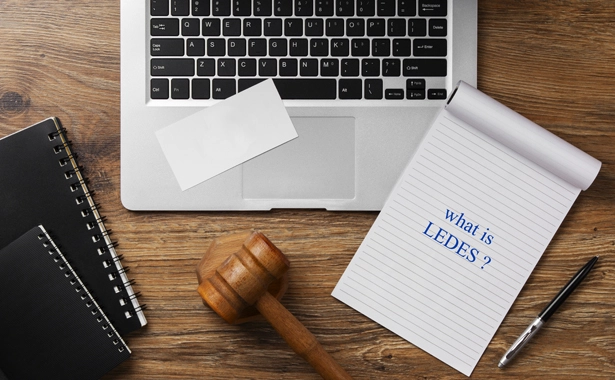Navigating the Characteristics of Status in Legal Equipments: A Holistic Approach
In the realm of lawful systems, the concept of standing quo holds a considerable function fit the structure upon which regulations and regulations are developed. Comprehending and efficiently navigating the dynamics of the status quo calls for an all natural method that surpasses mere surface-level analysis. By delving right into the complex interaction of different elements affecting the legal status, one can reveal nuanced insights that lead the way for notified decision-making and strategic planning. As we check out the intricacies bordering this pivotal aspect of legal frameworks, a much deeper understanding of the obstacles and opportunities that include it arises, advising us to reevaluate standard techniques and welcome a much more detailed perspective.
The Significance of Status Analysis
In legal procedures, carrying out a thorough status evaluation is paramount to understanding the existing state of events and giving a structure for educated decision-making. This evaluation includes a comprehensive review of existing problems, agreements, and conditions that shape the context within which lawful actions are being thought about. By evaluating the status, attorneys can identify crucial stakeholders, commitments and legal rights, potential threats, and opportunities for resolution.
Additionally, diving right into the status facilitates the identification of any type of gaps or incongruities that may exist, shedding light on areas that require focus or information. This procedure aids in establishing realistic expectations and creating methods that straighten with the dominating situations. Recognizing the status is vital for creating a roadmap that guides lawful proceedings towards efficient results while lessening unintentional effects.
Eventually, a meticulous condition quo evaluation acts as a keystone for audio legal recommendations and calculated preparation. It enables legal professionals to browse complexities, expect obstacles, and tailor their approach to accomplish beneficial results for their clients.
Factors Affecting Lawful Status
Taking into consideration the elaborate internet of laws, regulations, and social standards, what are the primary aspects that form and influence the lawful condition quo in modern lawful systems? Several vital factors play crucial functions in identifying the lawful condition quo within a legal system. Additionally, political characteristics and the equilibrium of power within a lawful system can greatly influence the lawful standing quo.
Methods for Condition Quo Administration
Effective administration of the lawful status quo needs a critical strategy that recognizes the vibrant nature of lawful systems and the varied elements affecting them. One vital technique for condition quo monitoring is normal tracking and analysis of legal developments.

In addition, effective interaction and partnership amongst stakeholders are essential methods for taking care of the status in legal systems. By fostering open discussion and collaboration in between policymakers, legal specialists, and various other relevant parties, potential conflicts can be dealt with proactively, and options can be established collaboratively to maintain a stable lawful environment.
Obstacles in Status Quo Adaptation

Furthermore, the lack of clear standards for navigating standing quo changes can develop unpredictability and obscurity. Attorneys often discover themselves in undiscovered region when trying to challenge existing norms or incorporate new legal frameworks. This can cause hesitancy and unwillingness to drift from acquainted practices, further restraining the adaptation procedure.

Carrying Out All Natural Strategies
Integrating a comprehensive perspective into legal methods is vital for dealing with the diverse obstacles of modern-day legal systems. Implementing holistic approaches entails a shift in the direction of seeing lawful issues as interconnected parts of a bigger system instead than separated events. This requires an aggressive position that considers not just the prompt lawful ramifications however likewise the broader social, economic, and ethical influences of lawful decisions.
One secret facet of implementing my latest blog post holistic methods is cultivating interdisciplinary collaboration within legal groups. By combining experts with diverse backgrounds such as law, psychology, economics, and sociology, an extra nuanced understanding of complex lawful issues can be accomplished. This collective method enables lawful specialists to establish a lot more effective techniques that represent a wide variety of aspects influencing the results of lawful situations.
Additionally, welcoming innovation and data-driven understandings is important in carrying out holistic approaches in lawful systems. Leveraging devices like expert system for lawful research study, anticipating analytics for instance outcomes, and information visualization for offering intricate info can improve decision-making processes and improve general lawful outcomes. By integrating these technological advancements right into legal technique, a more alternative and reliable technique to dealing with legal challenges can be accomplished.
Conclusion
Finally, browsing the characteristics of status in legal systems needs a comprehensive understanding of the importance of standing quo evaluation, the different factors affecting lawful status, reliable approaches for status monitoring, and the challenges in condition quo adaptation. Carrying out holistic approaches is vital for effectively adapting and handling to the status in lawful systems. It is vital for lawful specialists to frequently examine and adapt to the altering characteristics of the standing quo to guarantee reliable and efficient legal end results.
Taking into consideration the elaborate web of laws, regulations, and social norms, what are the main factors that shape and affect the legal standing quo in modern lawful systems? Several key variables play essential functions in identifying the legal condition quo within a lawful system. It is the interaction of these factors that jointly form and influence the lawful standing quo in modern legal systems.
Efficient administration of the lawful condition quo calls for a critical method that acknowledges the vibrant nature of legal systems and the navigate to these guys varied aspects affecting them.In verdict, browsing the dynamics of standing quo in legal systems requires an extensive understanding of the value of status quo analysis, her comment is here the different aspects influencing legal status quo, efficient strategies for standing quo monitoring, and the challenges in status quo adaptation.